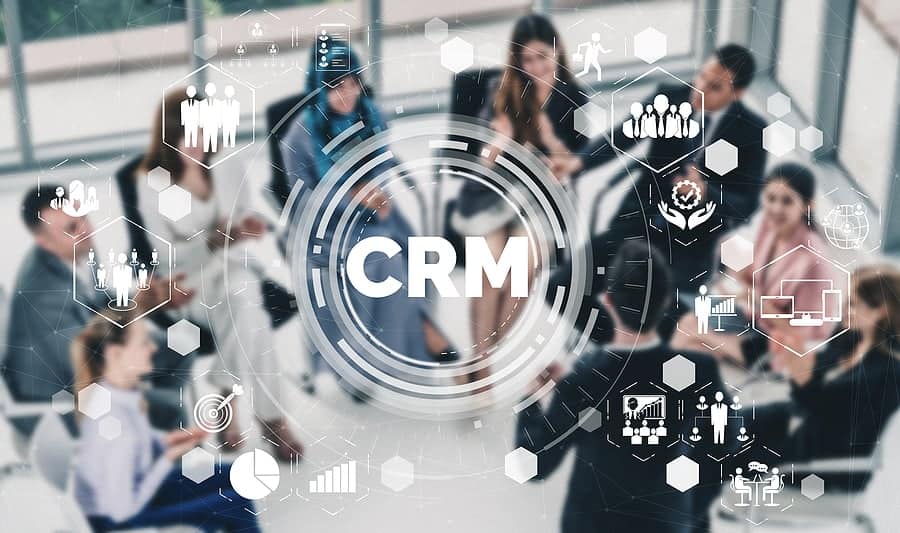One thing most successful businesses have in common is the fact they have customers always willing to engage with their brand. In industry-speak, such companies are said to provide positive customer experience (CX). According to SuperOffice, as much as 86% of customers are willing to pay more for goods and services if they are couched within a customer experience.
Table of Contents
ToggleAnother similarity between the aforementioned businesses is the massive number of interactions they process on a regular basis, which gives them access to vast quantities of customer data. By utilizing this data, these companies are able to optimize almost every aspect of their operation, including the quality of the CX generated.
The linchpin that connects customer data to customer experience (and vice versa) is CRM. CRM software is essential for controlling the flow of information to and from the customer. Through the effective use of CRM tech, businesses can reap the rewards of having a loyal and engaged customer base.
To help you understand how to leverage your CRM system to its full extent, we explore the fundamentals of CRM use for CX.
Why Customer Experience Matters
To understand why CX is essential for every modern business, we will contrast it with an older model of understanding business to customer relationships. According to this older model, customers are logical beings, and they purchase products based strictly on conscious decisions.
This model is outdated because it fails to take into account that people buy things for many different reasons, only some of which are rational. In reality, consumers purchase products based on logical reasons, but also based on emotions, perceptions, impressions, hunches, and other kinds of psychological factors.
CX is an attempt to take into account all these different factors, as this allows for a more complete understanding of the customer, and how they are likely to behave. This knowledge allows companies to optimize their customer strategy to achieve better business results.
Essential CRM Features For CX
CRM software comes with a variety of features for handling business to customer interactions. Here is how two of these specific features can help you optimize your CX strategy.
1. Task Automation
CRM is essentially a collection of software tools for simplifying typical business procedures. These procedures include sending emails, looking up customer information, recording transactions, etc. While basic in nature, these activities are essential for maintaining relationships with customers. CRM allows you to automate these activities, making them less time-consuming and error-prone.
Task automation has two main benefits for CX. One, automation allows employees to tackle more pressing tasks, thus allowing them to be more productive. Two, automation helps you generate additional customer data as a side-effective at no additional cost.
2. Data Centralization
A CRM system also acts as a database for all your customer data. This allows companies to maintain a lightweight tech-stack by eschewing the need to chain many different tools to achieve the same effect. Instead of using separate software for spreadsheets, database management, and email, you can simply install a single integrated CRM solution.

Having all your customer data accessible from a single endpoint ensures that marketing, sales, and customer service each have a complete 360 view of the customer. This in turn makes it easier to provide positive CX.
How CRM Improves Customer Experience
Now that we know how CRM and interact in general, we will explore the specific ways CRM improves CX.
1. Personalization
Customers respond better to businesses when the latter take into account their preferences as consumers. And the way to act on these preferences is through personalization.
CRM makes it easy to track what each customer wants and expects from your business based on data such as their transaction history, average order value, and other factors. This data in turn allows for the creation of custom email chains, product recommendations, and other forms of personalized content.
2. Response Time
Timing is essential for providing positive CX. If you attempt to approach the customer at a bad time, they will respond badly to your offer, even if they might be willing to do business with you otherwise.
CRM makes timing a non-issue through customer activity notifications. These allow companies to respond to customer queries in real-time, i.e. whenever it is the most convenient for them, which is a hallmark of quality CX.
3. Relevance
In addition to knowing when is the best time to interact with customers, it is also important to make a relevant proposal, i.e. one that the customer is willing to consider based on their needs, wants, and desires.
Having customer data on-hand through CRM allows businesses to match customers with content specifically relevant to their interests, and then deliver that content via the channel the customer prefers.
4. Consistency
CRM enables companies to improve customer experience with CX metrics. Keeping track of CX metrics allows you to find patterns and consistencies in customer behavior. Adjusting your communication efforts to be in line with these patterns is crucial for providing a satisfactory CX.
Consistency is also crucial for building your reputation as a brand. Customers communicate with each other through various channels, and you want them all telling the same positive story about their experiences with your brand.
How CX Powers CRM
By now it should be evident that CRM can greatly benefit CX. But the reverse is also true. Generating positive CX will help you leverage CRM to its full extent, and here is how.
1. Satisfied Customers Are More Willing to Share Data
Every interaction between a business and customers involves a potential exchange of information. For instance, the customer exchanges his email address to sign up for a newsletter upon first visiting a website. If this exchange of information results in a positive CX, the customer will be more willing to share data in the future, thus increasing the utility of your CRM system.
2. Satisfied Customers Are More Willing to Give Out Referrals
Another way to increase the amount of data entering your CRM system is by generating new customers through referrals. Satisfied customers are more likely to give out referrals, which again gives you access to more customer data. This expands the breadth of your data, which gives you insight into current CX trends.
3. Satisfied Customers Stick Around For Longer
The longer a customer is engaged with your business, the bigger their data-trail within your system will be. This extra data can be used to create more detailed customer profiles, which in turn allows you to sell more effectively. This creates a feedback loop whereby the better experiences you create, the more you will sell, and the more you sell, the more effective you will be at CX.
Transforming Data into Customer Experience
The trend towards CX reflects a new holistic approach to B2C communication. Instead of confronting the customer with an offer, and leaving it up to chance whether they will accept it, businesses have realized that creating a shared experience is a much more effective way to nudge customers to buy.

Creating positive CX used to be painstaking work due to the number of variables involved, but thanks to data manipulation tools such as CRM, the process can largely be automated, while maintaining an equal or greater level of effectiveness. This allows business to keep their customers happy while extracting more value at the same time at little extra cost.
Summary:
Data Improves Customer Experience
The linchpin that connects customer data to customer experience (and vice versa) is CRM. CRM software is essential for controlling the flow of information to and from the customer. Through the effective use of CRM tech, businesses can reap the rewards of having a loyal and engaged customer base. CRM software comes with a variety of features for handling business to customer interactions. Here is how two of these specific features can help you optimize your CX strategy. 1. Task Automation 2. Data Centralization How CRM Improves Customer Experience: 1. Personalization 2. Response Time 3. Relevance 4. Consistency




